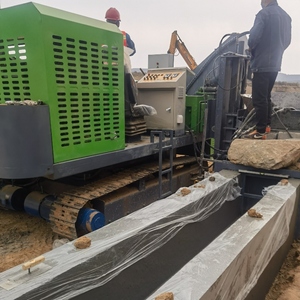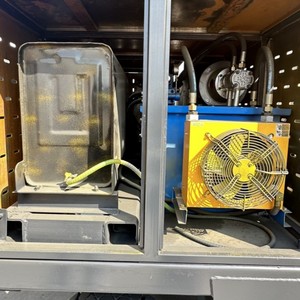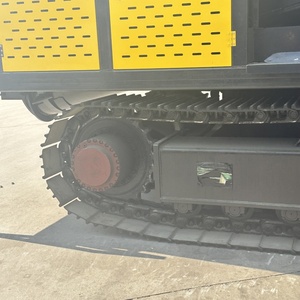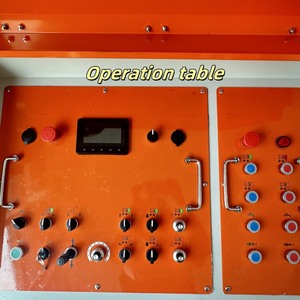(584 products available)











































































































































































































A retaining wall formwork is a structure that holds liquid concrete in place while it sets, creating a wall to support soil or other materials on one side. There are different types, including:
Traditional Poured Concrete Walls:
These walls use timber or steel formwork to mold wet concrete into a desired shape. The formwork is removed after the concrete cures, leaving a solid wall. The wall can be made tall and thick to hold back large amounts of soil behind it.
Precast Concrete Walls:
These retaining walls are made in a factory and then assembled on-site. Steel or fiberglass formwork is used to cast the concrete pieces, which cure fully before being transported. Installation involves placing the precut sections in order and filling joints with concrete.
Sheet Piling Walls:
Steel, vinyl, or wood panels are used to create long, thin walls that are driven into the ground like a nail. They work well for sites near water since the panels create an immediate barrier. Installation is quick, and they require less concrete than traditional methods.
Gabion Walls:
These walls use steel baskets filled with rocks to create a structure that holds back soil. Water can flow through them, which helps prevent erosion. They are easy to build and use natural materials.
Gravity Walls:
These simple walls rely on their weight to stay in place. They are made with large, interlocking stones or blocks that distribute the pressure from the soil behind them. Since they use no additional materials, they work well for smaller projects.
Wall Cribbing:
This involves stacking wooden beams or boards in a square pattern like a crib. The crossed beams inside provide strength, and it can hold back soil until concrete cures. It is also fully adjustable for different-sized walls.
Counterfort Walls:
These walls have supports called counterforts that extend back into the hill at angles. This distributes pressure evenly across the wall so it does not tip over. They work well for sites with uneven ground.
Retaining wall formwork is crucial in constructing concrete walls that require soil support. Understanding its features and functions can help in maximizing efficiency and durability of the walls.
Materials
Retaining wall formwork is made from various materials. Each of them offers unique benefits during construction. The dominant materials are steel, aluminum, plywood, and timber.
Steel forms are usually made of high-quality steel that can be reused many times. This makes it a popular choice among contractors. They also produce smooth concrete finishes. Steel forms can also be designed to accommodate different sizes of walls.
Aluminum forms are lightweight, making them easy to handle and transport. They are also resistant to corrosion, which reduces maintenance costs. Aluminum forms are suitable for projects that require a high level of precision.
Plywood forms are constructed using a wooden frame covered with plywood sheets. They are cost-effective and produce a smooth concrete finish. These forms are highly customizable and suitable for different types and sizes of walls.
Timber forms are made from wood. They are often used for smaller projects or when a natural aesthetic is desired. They are also easily adjustable and can be reused several times.
Types of retaining wall formwork
There are different types of retaining wall formworks. Each of them is designed to handle specific project requirements.
Single-sided formwork is used when concrete walls have access to one side. This formwork supports the concrete cast from the open side. It's ideal for low walls or walls against existing structures.
Panel formwork consists of prefabricated panels that can be assembled and disassembled quickly. It is suitable for large-scale projects. This formwork provides consistent concrete quality.
Modular formwork is made up of square or rectangular units that can be combined in different ways to create forms of various sizes and shapes. This formwork is suitable for different wall sizes.
Climbing formwork is supported by hydraulic jacks that will climb up the structure as construction progresses. It is suitable for tall retaining walls.
Plastic formwork is made from durable, lightweight plastic. It is easy to handle and assemble. This formwork is resistant to water and chemicals.
Retaining wall formwork is applied in various scenarios, such as:
Structural Concrete Walls
Structural concrete walls are constructed using concrete poured between two parallel walls made of wood, steel, or plastic, known as formwork. This method is used for structural walls like foundations or retaining walls that hold back soil. The formwork shapes the concrete into a solid wall that supports buildings or structures.
Bridge Abutments
Bridge abutments are the supports at the end of a bridge that hold the weight of the bridge and the earth on either side. Formwork is used to create concrete walls that are strong and sturdy enough to bear the load of the bridge and keep it safe for cars and trains to pass over.
Basements and Cellars
Formwork is used to create concrete walls for basements and cellars. The walls need to be strong and solid to support the weight of the building above and keep out soil and water from the ground. Formwork helps shape the concrete into walls that provide a safe underground space for storage or parking.
Retaining Walls
Retaining walls hold back soil in hilly or sloped areas to prevent landslides or shifting ground. They are used to create flat areas for buildings, roads, or other structures on uneven terrain. Retaining walls make the ground stable and safe by using formwork to create strong concrete walls that can hold back the earth.
Soil Nailing
Soil nailing is a technique used to stabilize sloped ground or excavations that involves inserting metal rods (nails) into the soil. Concrete formwork is then applied to create a solid wall around the nails. This helps secure loose soil and prevents landslides or collapsing ground.
Anchored Walls
Anchored walls are stabilized with cables that are tensioned through the wall into the soil. Formwork creates strong concrete walls that are held in place by these anchored cables, allowing the wall to safely hold back soil in areas with steep slopes or excavation sites.
When choosing the right formwork for retaining walls, it is essential to consider some factors to ensure the wall is constructed correctly. Here is a list of some factors business owners should consider before choosing the right formwork.
Soil conditions and topography
Retaining walls are built to hold back soil from sloping or spreading. Therefore, it is essential to assess the site soil conditions and topography to determine the best type of formwork to use. For example, cohesive soils may require more robust formwork than granular soils.
Project budget
The project budget plays an important role in the selection of formwork. Each type of formwork has its cost of construction and rental options. It is important to choose a type of formwork that will deliver the desired results within the allocated budget. Concrete formwork for retaining walls is a cost-effective option that suits a variety of project budgets.
Labor skills
The skills and experience of the construction crew will influence the type of formwork selected. Some formwork types, like timber, require skilled labor to assemble and disassemble, while others, like steel or aluminum formwork, can be handled by less skilled personnel due to their precise manufacturing and ease of use.
Wall height and thickness
The height and thickness of the wall will determine the type of formwork to be used. For instance, walls with more height and thickness will require more support and stability during the curing of concrete. Therefore, it is essential to consider these factors when choosing retaining wall formwork.
Concrete mix design
The choice of concrete mix will influence the formwork selection. For example, concrete with a high workability can be poured into the formwork without any issues. Conversely, concrete with low workability may require specific formwork features to be poured and set properly.
Q1: Is it possible to use retaining walls to hold water?
A1: Yes, it is possible. Engineers build water-retaining walls in reservoirs, canals, and tanks. Such walls have a thin, vertical, water-proofing layer of concrete at the back.
Q2: What type of soil is best for building walls?
A2: Well-drained soils, such as sandy loam, are ideal. They drain quickly and don't retain too much moisture. This prevents pressure build-up behind the wall. Moisture content is the key factor when choosing the right soil.
Q3: Do walls settle over time?
A3: Yes, retaining walls can settle or shift slightly over time as the soil behind them compacts or due to changes in moisture levels. However, well-designed walls should remain stable and in their original positions for many years.
Q4: What makes a retaining wall fail?
A4: Excess water pressure, behind-wall soil erosion, poor wall drainage, and the use of unsuitable materials can cause walls to lean, bow, or collapse. Proper drainage and engineering help prevent failures.
Q5: What is the lifespan of a retaining wall?
A5: Well-designed and properly-built walls using quality materials can last 50 years or more. Regular maintenance also helps extend a wall's lifespan.